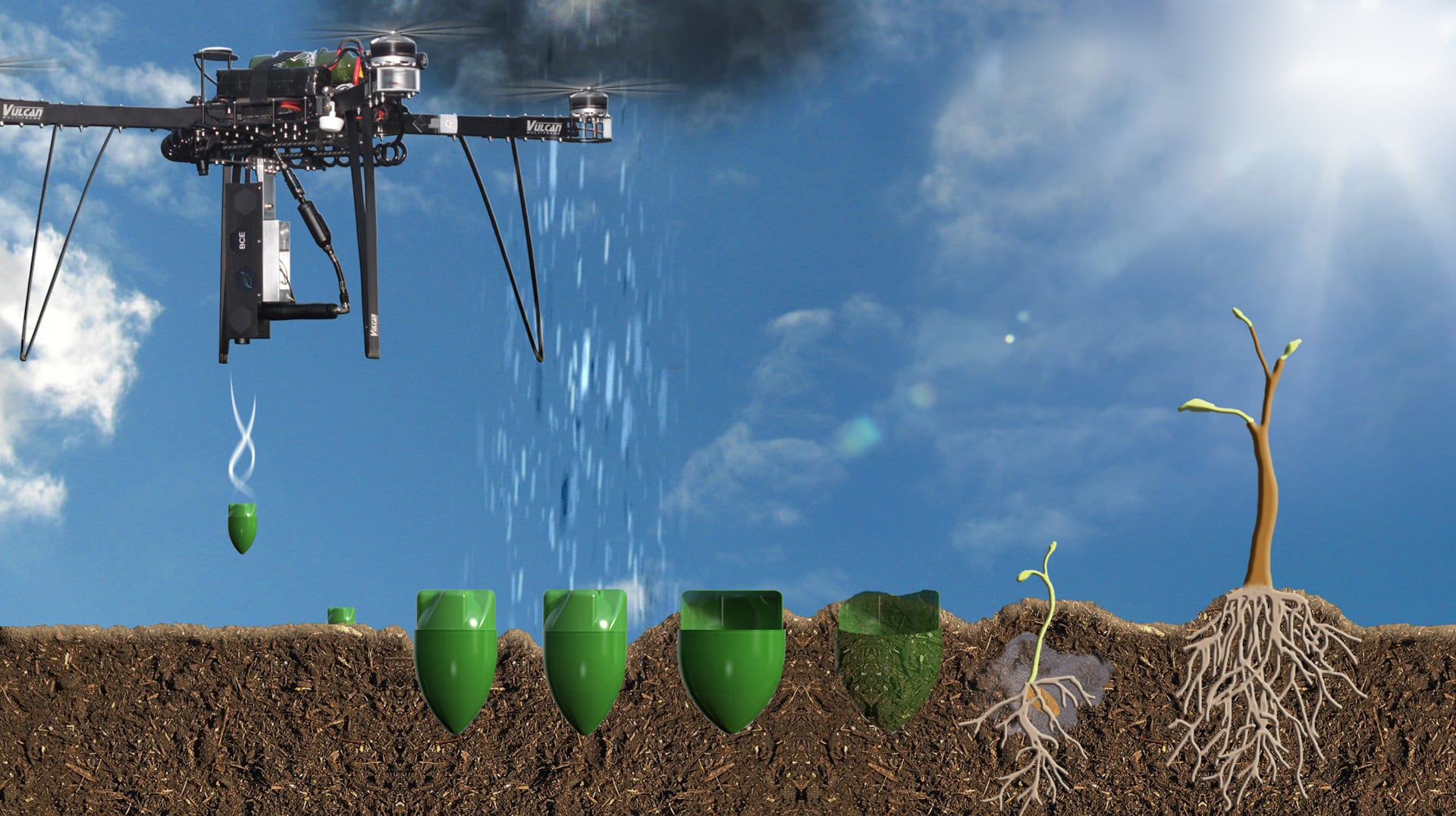
News
How BioCarbon Engineering’s Drones Could Restore Earth’s Forests
Fires, drought – and certain human activity – often results in large areas of land being denuded of trees, and restoring the much-needed forest coverage for a healthy environment can be a daunting task.
Now, a test conducted by BioCarbon Engineering has shown that tasks such as these could be made easier to complete by using swarms of drones planting almost 400,000 tree seeds each day.
And, the company’s wider objective – to plant 500 billion trees by 2060 – is one step closer, having received a funding boost of US$2.5 million last month from SYSTEMIQ and Parrot.
Lauren Fletcher, chief executive of UK-based BioCarbon Engineering, demonstrated the drone that they have created to achieve this goal at the Canadian Wood Fibre Centre this week.
Canada has large areas of land across the country that desperately need reforesting, according to Fletcher.
“There’s an absolutely huge, huge area across Canada in need of … reforestation activities,” he said. With BioCarbon Engineering’s drone, planting these areas can be done faster.
“What we can do is make tree planters 150 times better … Think about it as a brighter, higher-tech shovel.”
To undertake this task, the Biocarbon Engineering drone flies about three metres above the ground, and uses fires seed capsules loaded with nutrients and seeds into the soil twice a second using pressurized air.
To date, the company has planted about 250 hectares of deforested land in England, Australia and Myanmar.

A BioCarbon Engineering drone helping the deforestation efforts on Myanmar | BioCarbon Engineering
Fletcher says that his goal is to have 300 teams run a swarm of 10 drones each at any location.
“If you got to 300 teams, that would get you to 10 billion trees a year, and that’s what we have to be thinking about if we’re talking about restoring global ecosystems,” he said.
About 450 million trees per year are planted in Canada each year mostly due to logging, according to Dirk Brinkman, chief executive of Vancouver’s Brinkman and Associates Reforestation.
But the process is expensive, and authorities can’t always fund the replanting of millions of hectares damaged by fire or other resources. Drones might present a more affordable and effective solution, he told the Edmonton Journal.
BioCarbon Engineering technician prepares the UAV for the seeding demonstration at Ellerslie site in Edmonton. pic.twitter.com/g6IB2hOAys
— Ray Darwent (@RayDarwent) May 23, 2018
Currently, traditional seeding methods are by hand and from air, said David Price, a Canadian Forest Service research scientist from the Canadian Wood Fibre Centre.
But these methods have limitations, he explained. Even fast-working tree planters can only plant 2,000 or even 3,000 seedlings a day, while ditching clouds of seeds from a plane is often inaccurate and has a low success rate.
“With drones and the potential to map these areas at a high resolution, we see the ability to map the perfect (planting) spots,” he continued.
Biocarbon Engineering’s drones, on the other hand, can track every seed’s precise locations, allowing application of herbicides at a later date to keep weeds competing for nutrients at bay.
BioCarbon staff will commence what Price thinks is the first drone seeding in Canada, and maybe North America at a 5-hectare clear-cut site 40 km south of Slave Lake near ALberta, Canada, this week.
2,500 pods containing two white spruce and a single jack pine seed will be dropped per hectare, with the results to be assessed over the next few years,
If the process works well, it could provide new options for forestry businesses and authorities, Price explained.
BioCarbon Engineering have also recently announced their partnership with Greening Australia to work on restoring Australia’s precious ecosystems.


















